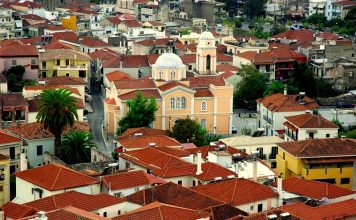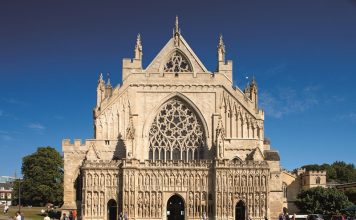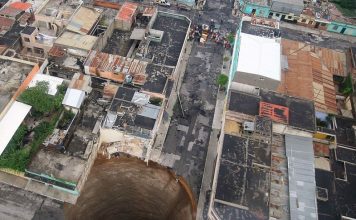Cáceres is a city in the autonomous community of Extremadura, Spain. It is the capital and most populated municipality of the province of Cáceres. Cáceres is famous for its rich historical and cultural heritage, as well as its natural beauty and gastronomy.
What is Cáceres Known For?
Cáceres originated as the Roman town of Norba Caesarina, came under Moorish control in the 9th century, and was known as Alkazares until reconquered for the Christians by Alfonso IX of Leon in 1229. The military Order of Santiago (originally the Fratres de Cáceres) was founded there in 1171 to protect the town during a brief interim of Christian rule. The old upper city is surrounded by massive, turreted walls that are half Roman and half Moorish. This part of the town, designated a UNESCO World Heritage site in 1986, has several medieval palaces and is dominated by the tower of the Gothic-style Church of San Mateo, built in the 16th century on the site of a mosque. Other landmarks include Santa María la Mayor Church (15th century) and the Casa de Toledo-Moctezuma, once the home of the conquistador Juan Cano. The modern lower city contains law courts, the city hall, and the palace of the bishops of Coria. A branch of the University of Extremadura is in the city.
Cáceres produces cork and leather goods, pottery, and cloth and exports grain, fruit, oil, livestock, wool, sausages, and phosphates from nearby mines. It is well known for its hams. The service industry is the mainstay of the economy. Cáceres acts as a trade centre for most of the province.
Cáceres is also famous for its festivals and events that celebrate its history and culture. Some of these are:
- The Festival of Women in Theatre (Festival de Mujeres en el Teatro), which takes place in March and showcases plays written and performed by women from different countries.
- The Easter Week (Semana Santa), which features processions of religious brotherhoods carrying floats with images of Christ and the Virgin Mary through the streets.
- The Womad Festival (World of Music, Arts and Dance), which takes place in May and brings together artists from various genres and cultures to perform music, dance, workshops and exhibitions.
- The Medieval Fair (Feria Medieval), which takes place in October and recreates the atmosphere of the Middle Ages with costumes, crafts, food and entertainment.
- The San Jorge Festival (Fiesta de San Jorge), which takes place on April 23rd and commemorates the patron saint of Cáceres with a parade, a dragon fight and a floral offering.
Cáceres is a city that offers a unique blend of history, culture and nature to its visitors. It is a place where you can discover ancient monuments, enjoy modern amenities, taste delicious cuisine and experience diverse traditions. Cáceres is a city that you will never forget.
Famous Drinks in Cáceres
One of the most famous drinks in Cáceres is the pitarra wine, a traditional homemade wine made from grapes grown in the region. Pitarra wine is usually sweet and strong, and can be red, white or rosé. It is often served in clay jugs or bottles with a cork stopper. Pitarra wine is typically consumed during festivals, celebrations and family gatherings.
Another famous drink in Cáceres is the licor de bellota, a liqueur made from acorns. Acorns are abundant in Extremadura, as they are the main food source for the Iberian pigs that produce the famous jamón ibérico (Iberian ham). Licor de bellota is a smooth and aromatic drink that can be enjoyed as an aperitif or a digestif.
Famous Sports in Cáceres
One of the most popular sports in Cáceres is football (soccer), as in most parts of Spain. The city has several football teams, such as CP Cacereño, which plays in the third division of the Spanish league, and CF Femenino Cáceres, which plays in the second division of the women’s league. Football fans in Cáceres also support Real Madrid or Barcelona, the two biggest clubs in Spain.
Another sport that has a long tradition in Cáceres is bullfighting. The city has a bullring called Plaza de Toros de Cáceres, which was built in 1846 and can seat up to 7,000 spectators. Bullfights are held during the Feria de San Fernando, which takes place in late May or early June. Bullfighting is a controversial sport that attracts both supporters and critics.
Famous Streets in Cáceres
One of the most famous streets in Cáceres is Calle Pizarro, which is the main commercial street of the city. It runs from Plaza Mayor, the main square of Cáceres, to Plaza de San Juan, where the Church of San Juan stands. Calle Pizarro is lined with shops, cafes, restaurants and bars, and is always bustling with activity.
Another famous street in Cáceres is Calle Moret, which leads to the entrance of the Ciudad Monumental (Monumental City), the historical quarter of Cáceres. Calle Moret is also known as Calle de la Estrella (Street of the Star), because it has a star-shaped arch at its end. The arch was built in 1476 by Diego García de Ulloa, a nobleman who wanted to commemorate his participation in the Battle of Toro against Portugal.
FAQs about Cáceres
- What is the best time to visit Cáceres?
The best time to visit Cáceres depends on your preferences and interests. If you want to enjoy the pleasant weather and avoid the crowds, spring (March-May) and autumn (September-November) are ideal seasons. If you want to experience the festive atmosphere and cultural events, summer (June-August) and winter (December-February) are also good options.
- How to get to Cáceres?
Cáceres is well connected by road, rail and air. You can drive to Cáceres from Madrid (300 km), Seville (250 km) or Lisbon (330 km) via highways A-5 or A-66. You can also take a train from Madrid (3 hours), Seville (3 hours) or Lisbon (5 hours) via Renfe or Comboios de Portugal. You can also fly to Badajoz Airport (100 km) or Madrid-Barajas Airport (330 km) and then take a bus or a taxi to Cáceres.
- What are some of the must-see attractions in Cáceres?
Some of the must-see attractions in Cáceres are:
- The Ciudad Monumental (Monumental City), which is a UNESCO World Heritage Site that preserves a remarkable collection of Roman, Moorish, Gothic and Renaissance buildings.
- The Bujaco Tower, which is a 12th-century tower that offers panoramic views of the city and houses a museum about the history of Cáceres.
- The Palace of Los Golfines de Abajo, which is a 15th-century palace that showcases the splendor of the noble families of Cáceres.
- The Casa del Sol (House of the Sun), which is a 16th-century house that has a distinctive sun-shaped coat of arms and a beautiful courtyard.
- The Cáceres Museum, which is a museum that displays archaeological, ethnographic and fine art collections from different periods and cultures.
See more Famous Places in Spain:
- What is Seville Famous For?
- What is Cadiz Famous For?
- What is Huelva Famous For?
- What is Caceres Famous For?
- What is Granada Famous For?
- What is Madrid Famous For?
- What is Barcelona Famous For?
- What is Valencia Famous For?
- What is Almeria Famous For?
- What is San Sebastian Famous For?
- What is Santanter Famous For?
- What is Salamanca Famous For?
- What is Oviedo Famous For?
- What is Valladolid Famous For?
- What is Cordoba Famous For?
- What is Alicante Famous For?
- What is Bilbao Famous For?
- What is Palma Famous For?
- What is Murcia Famous For?
- What is Zaragoza Famous For?














